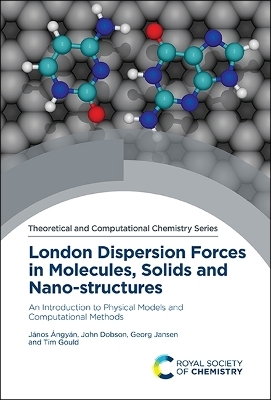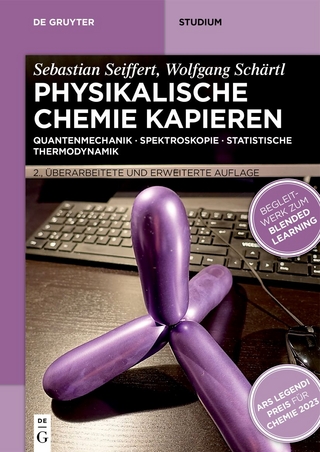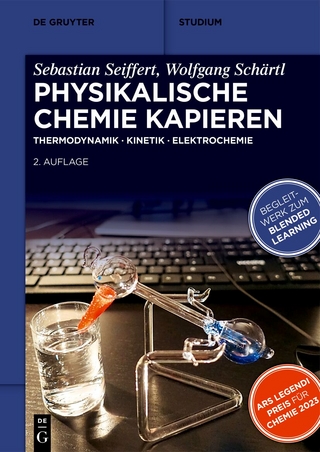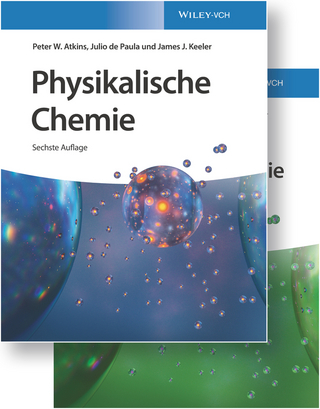
London Dispersion Forces in Molecules, Solids and Nano-structures
Royal Society of Chemistry (Verlag)
978-1-78262-045-7 (ISBN)
London dispersion interactions are responsible for numerous phenomena in physics, chemistry and biology. Recent years have seen the development of new, physically well-founded models, and dispersion-corrected density functional theory (DFT) is now a hot topic of research. This book is an overview of current understanding of the physical origin and modelling of London dispersion forces manifested at an atomic level. It covers a wide range of system, from small intermolecular complexes, to organic molecules and crystalline solids, through to biological macromolecules and nanostructures. In presenting a broad overview of the of the physical foundations of dispersion forces, the book provides theoretical, physical and synthetic chemists, as well as solid-state physicists, with a systematic understanding of the origins and consequences of these ubiquitous interactions. The presentation is designed to be accessible to anyone with intermediate undergraduate mathematics, physics and chemistry.
János Ángyán (1956–2017) was a Director of Research with the CNRS, France, based at the University of Lorraine. His main research interests were intermolecular interactions and the electronic structure of solids. John Dobson is an Emeritus Professor at Griffith University, Australia. His research interests are in theoretical condensed matter physics, chemical physics and nanoscience. Georg Jansen is Professor for Theoretical Organic Chemistry at the University of Duisburg-Essen, Germany. His research focusses on the calculation and interpretation of intermolecular interactions. Tim Gould is a Senior Lecturer in Applied Mathematics at Griffith University, Australia. His research interests include quantum chemistry method development, chemical physics and electronic structure theory of molecules and solids.
Introduction;
Basic Concepts from Toy Models;
Macroscopic Lifshitz Approach;
Supermolecular Wavefunction Methods;
Intermolecular Perturbation Theory;
Adiabatic Connection, Fluctuation–Dissipation Approach: RPA and Related Correlation Energy Methods;
Dispersion Energy From Groundstate Electron “Densities” ρ( r⃗), ∇ρ( r⃗), τ( r⃗), etc.: Explicit Functionals;
Dispersion Energies via Division Into Atoms or Larger Units;
Some Chemical Effects of Dispersion Interactions;
Periodic Solids;
Low-dimensional Systems: Nanolayers, Nanotubes, Nanowires, etc.;
Interaction of Molecules with Surfaces and Layers;
Summary of Recommended Methods;
Many-electron Quantum Mechanics;
Linear Response and the Fluctuation–Dissipation Theorem;
Basics of Groundstate Density Functional Theory;
Some Useful Mathematics;
Partitioning Into Atoms;
Polarisation Approximation: Higher-order and Many-body Contributions
| Erscheinungsdatum | 20.07.2017 |
|---|---|
| Reihe/Serie | Theoretical and Computational Chemistry Series ; Volume 16 |
| Verlagsort | Cambridge |
| Sprache | englisch |
| Maße | 156 x 234 mm |
| Gewicht | 850 g |
| Themenwelt | Naturwissenschaften ► Chemie ► Physikalische Chemie |
| Naturwissenschaften ► Physik / Astronomie ► Quantenphysik | |
| ISBN-10 | 1-78262-045-1 / 1782620451 |
| ISBN-13 | 978-1-78262-045-7 / 9781782620457 |
| Zustand | Neuware |
| Informationen gemäß Produktsicherheitsverordnung (GPSR) | |
| Haben Sie eine Frage zum Produkt? |
aus dem Bereich


